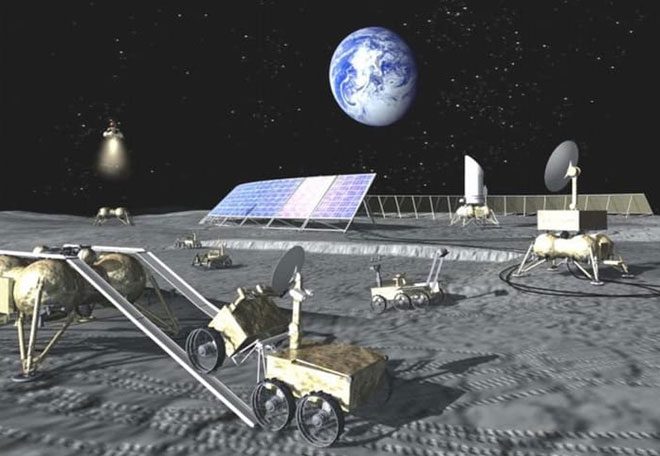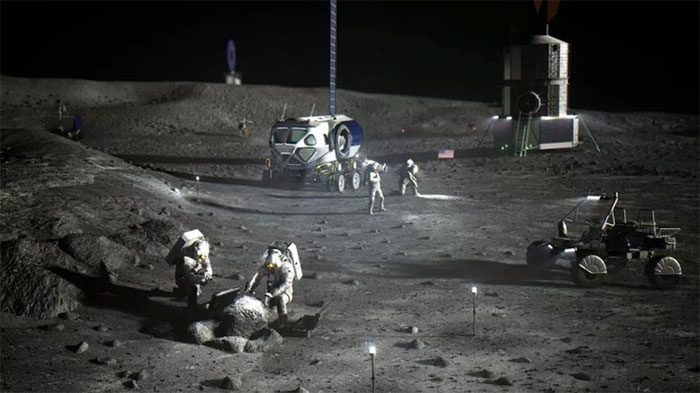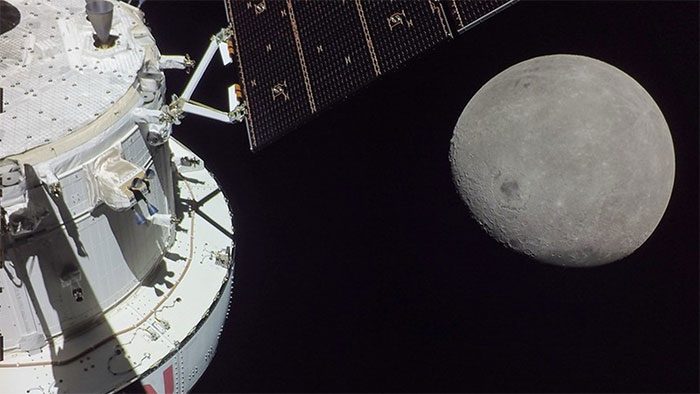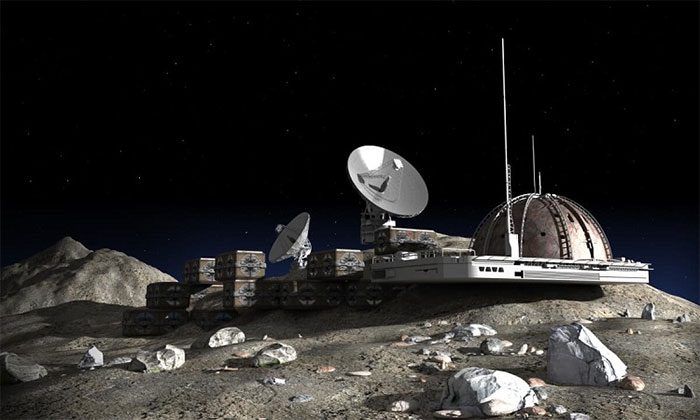Recent research shows that China has successfully tested a method for producing oxygen from lunar soil, becoming the first country to produce oxygen on the Moon’s surface.
The Principle of Oxygen Production from Lunar Soil: How is Oxygen Extracted from Lunar Soil?
With the continuous advancement of space exploration, human exploration of the Moon has gradually made significant progress. One of the key issues is how to provide sufficient oxygen to support lunar exploration missions. Thus, producing oxygen from lunar soil has become an effective method to address this challenge.
The atmosphere on the Moon is extremely thin and contains almost no oxygen, which means that space exploration missions must carry adequate oxygen supplies. The traditional method involves transporting oxygen from Earth to the Moon; however, this approach is very costly, consuming excessive fuel and increasing the spacecraft’s payload. Therefore, scientists have started researching ways to utilize existing resources to extract oxygen from the Moon, aiming to reduce dependence on Earth’s supplies.

China has also made significant progress in researching, developing, and innovating oxygen production equipment. (Photo: ABC News)
Lunar soil is the soil on the Moon’s surface, which is rich in metal elements and oxides. Scientists have observed that when the surface temperature increases, some oxides in lunar soil decompose and release oxygen. This phenomenon is known as “thermal decomposition reaction of lunar soil”. Based on this phenomenon, scientists began to explore how to use lunar soil to produce oxygen.
The process of producing oxygen from lunar soil on the Moon can be divided into several steps. First, a lunar probe collects lunar soil samples and brings them back to the base laboratory. Then, in the laboratory, scientists pre-treat the lunar soil samples to remove impurities to ensure that subsequent experiments can proceed smoothly.
Scientists will use specialized equipment to heat the lunar soil samples. During this process, the lunar soil samples are heated to high temperatures, typically above 1,000 degrees Celsius. Under high-temperature conditions, the oxides in the lunar soil undergo thermal decomposition reactions to produce oxygen and other gases. Subsequently, scientists separate the extracted oxygen from other gases through a series of separation and purification steps.
Pure oxygen can be stored or supplied directly for space exploration missions. To ensure the quality of oxygen in the spacecraft, scientists will also conduct a series of tests and checks on the extracted oxygen to ensure it meets usage standards.

The Chinese scientific research team has conducted in-depth research on the design and production of oxygen production equipment and developed a new, compact, and energy-efficient oxygen production device. These devices utilize advanced automation and process control technology to make the oxygen production process smarter and more controllable, significantly improving the oxygen production efficiency of the equipment. (Photo: Zhihu).
Of course, the technology for producing oxygen from lunar soil is still in the research and testing phase and has not yet been applied on a large scale. Scientists also need to address several technical issues, such as how to enhance the efficiency of oxygen extraction and how to manage harmful substances in lunar soil, etc. However, with the continuous advancement of technology, the production of oxygen from lunar soil is expected to become an important method for providing oxygen for future space exploration missions.
China’s Successful Experiment: Breakthroughs and Progress in Oxygen Production Technology
With the increase in population and industrial development, oxygen, as a vital resource, is widely used in healthcare, industry, and agriculture. However, due to the challenges of traditional oxygen production technologies, such as low efficiency, high energy consumption, large equipment size, and high costs, humanity has long sought a more efficient, energy-saving, and sustainable oxygen production technology. In recent years, China has made significant breakthroughs and advancements in oxygen production technology, achieving results that have garnered worldwide attention.
The Pressure Swing Adsorption (PSA) oxygen production technology developed in China has made remarkable breakthroughs in efficiency and energy consumption. The PSA technology is a gas separation method using solid adsorbents, leveraging the different affinities (electronic properties) and diffusion rates of different gases on the adsorbent to achieve effective oxygen separation.
Compared to traditional liquid oxygen production technology, PSA oxygen production technology operates simply, allows for smaller equipment, and has a quick response time. In laboratories and industrial production in China, PSA oxygen production technology has been widely adopted, significantly improving oxygen production efficiency and reducing energy consumption.

China has also made significant breakthroughs in membrane separation technology – using specific membrane materials to separate gases, which can achieve effective oxygen separation by adjusting the pore size of the membrane, membrane performance, and process parameters. (Photo: Zhihu).
The Chinese scientific research team has achieved important breakthroughs in developing membrane materials and optimizing membrane separation processes, simultaneously developing a range of high-performance, highly selective membrane materials for producing high-purity oxygen. These membrane materials exhibit good permeability, high oxygen absorption rates, and compressive strength, effectively addressing the low gas separation performance issues in traditional membrane separation technologies and taking Chinese oxygen production technology a step further.
The Importance of Producing Oxygen from Lunar Soil for Lunar Exploration and Human Habitation
With the continuous advancements in science and technology, humanity’s passion and desire for space exploration are increasing. As the celestial body closest to Earth, the Moon is always considered a crucial base for humanity to explore deeper into the universe.

One of the major challenges in exploring and living on the Moon is providing oxygen. However, the advent of lunar soil oxygen production technology has opened the door to the future of the Moon. (Photo: ZME).
The Importance of Promoting Lunar Exploration
The technology for producing oxygen from lunar soil provides a crucial resource guarantee for lunar exploration. Traditional exploratory missions must carry sufficient oxygen supplies, which limits the duration and scope of the mission. With the technology for producing oxygen from lunar soil, astronauts can continuously produce oxygen using lunar resources without needing to transport additional oxygen. This will significantly expand the potential for lunar exploration, allowing us to study the Moon’s geological structure, groundwater sources, and other unknown regions in greater depth.
Encouraging Human Settlement on the Moon
Producing oxygen on the Moon may also enable the establishment of a long-term base and human habitation on the Moon in the future. The technology for producing oxygen from lunar soil can provide a continuous and renewable oxygen source for lunar bases to meet the living needs of astronauts and scientific research requirements. At the same time, the technology for producing oxygen from lunar soil also offers new methods for utilizing and developing lunar resources, such as using metal elements in lunar soil to construct the structures and equipment of the lunar base.
Significance for Earth’s Renewable Energy Sources
The development and application of technology for producing oxygen from lunar soil also inspire advancements in renewable energy on Earth. Producing oxygen from lunar soil relies on the high-temperature pyrolysis process of lunar soil, and this principle is similar to the operating principle of solar photovoltaic cells on Earth. Through this technology, we can gain a deeper understanding and application of renewable energy sources, such as solar energy, providing important references for sustainable energy development on Earth.
Ultimately, only through continuous efforts and collaboration can we truly transcend the final frontier in human history.


















































